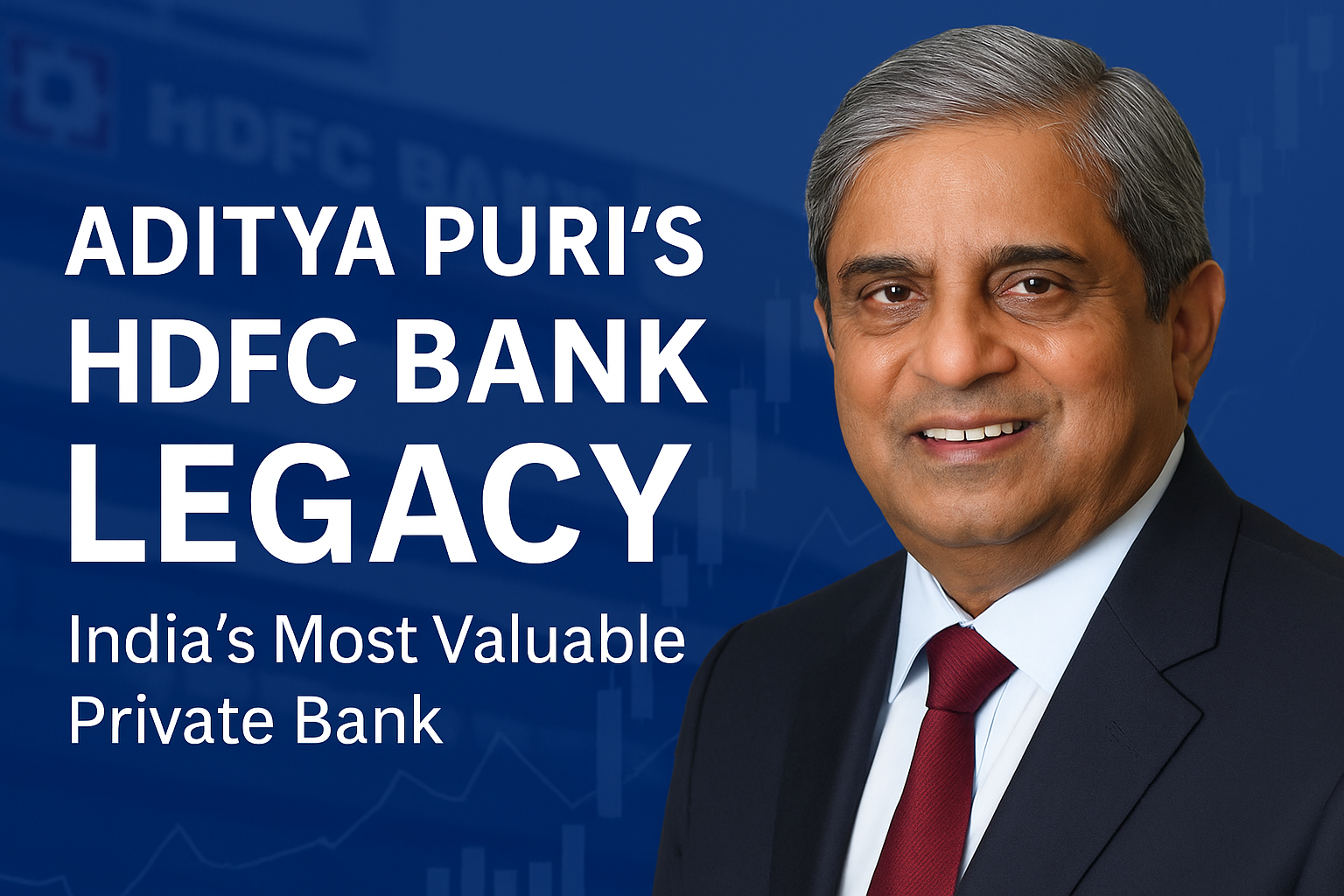Announcement: Lorem ipsum dolor sit amet, consectetur adipiscing elit. Donec et quam blandit odio sodales pharetra.
Few bankers left as profound an influence as this CEO did
On 26 October Aditya Puri hung up his boots after an illustrious 26-year career. Clearly, HDFC Bank has emerged over the years as the largest private sector bank as well as the most valuable and the most profitable bank in India. How exactly was this achieved at a time when most Indian banks have struggled with a mountain of bad loans? That, in a way, defines the Aditya Puri story.

Table of Content
Growth with quality
Aditya Puri is one of the few bankers of whom even competitors have a good word to say. In a tweet, ICICI Bank admitted that Indian banking would miss a person of the stature of Aditya Puri. Encomiums poured in fast. But the real story of HDFC bank was built on something a lot more boring and basic.
Puri is often gracious enough to ascribe the success of HDFC Bank to the team of professionals. But there is a core philosophy on which the banks has been built over the years. The bank has never chased volumes at the cost of margins and that explains why they waited for a long time for the big thrust. Secondly, asset quality was foremost as is evident from the 1.3% gross NPAs of HDFC Bank. It was a combination of stringent credit assessment, aggressive collection and continuous market intelligence. Lastly, the bank never compromised on core banking processes and that must be credited to the efficient and flawless communication flows internally.
Pugnacious and feet on street
There are countless stories of how in the early days, Puri would personally visit each potential customer. It was not an easy journey. He was up against a gigantic PSU banking system and a very aggressive ICICI Bank. Puri used to tell his colleagues that the real picture of Indian banks would only emerge when customers started to default. It worked out exactly that way as post–2012, the NPA crisis snowballed. HDFC Bank then built its formidable asset book to cross ICICI Bank and created value through asset quality. By the time Puri hung up his boots, HDFC Bank was valued at 4-times Deutsche Bank of Germany. That surely speaks a lot more than words!
There are challenges ahead
In a way S Jagadishan has inherited a bank that anyone would love to lead. Low NPAs, high growth and tantalizing NIMs offer a salivating combination. But, that only increases the expectations from the bank and reduces the room for any mistakes. Bank mergers have given heft to the PSU banks. Other private banks are learning from the HDFC Bank story, just as the Romans learnt from Hannibal. Secondly, banking is changing rapidly and banks are emerging more as platforms and less as institutions. HDFC Bank was one of the private banks at the forefront of online banking. How they manage the next level Fintech challenge will script the next chapter!
Comments